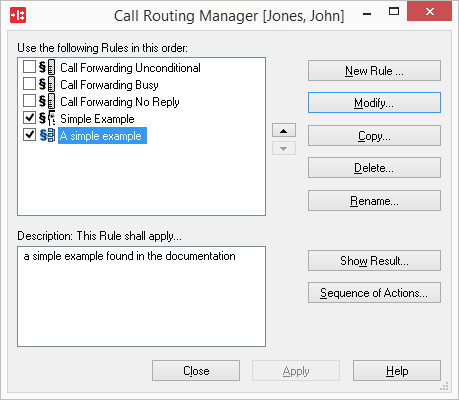This chapter provides a step-by-step description of how the Graphical Script Editor works based on a simple sample script.
An incoming call is automatically picked up and the caller hears an announcement. After the announcement has been played or if a DTMF tone is entered, the call is forwarded to the switchboard. The call handling is then considered completed.
If the connection is interrupted (e.g. the caller terminates the call), then the call handling is considered cancelled. In this case, it is possible for other rules to be applied by the Call Routing Manager.
All views correspond to the default setting of the Graphical Script Editor.
1 Open the Call Routing Manager.
The following window appears: “Call Routing Manager“.
2 Open the the Graphical Script Editor in order to create a rule by clicking in the Call Routing Manager on “New Rule…”.
The window “New Rule” appears.
| The “New Rule” window will only appear if you have the right to edit rules using the Graphical Script Editor. See also User Rights. |
3 Select “Graphical Script Editor“ and click on “OK”.
The Graphical Script Editor will open with the start page.
4 Click on the symbol “Play Announcement”

in the menu bar and click once again on the grid interface of the the Graphical Script Editor to place the block “Play Announcement”.
5 Double-click on the block “Play Announcement”.
The "Properties of…" window will appear.
6 Then, on the “Parameters” tab, define the announcement to be played. You can select an announcement from the drop-down list, record an announcement yourself, or search for an announcement file. You can listen to the selected file using

.
When searching, you can also choose an announcement file in MP3 format. Upon selection, the MP3 file will automatically be converted into the WAV format supported by the Graphical Script Editor and saved in the database on the SwyxServer. The converted files are thus available for further use in other blocks and actions. The conversion may take a moment to complete. During the conversion process, the Info dialog "Please wait, the file is being converted into WAV format" is open.
| In each block, in which the announcement selection is available, it is possible to select the "system music on hold". |
In our example, the file “Subscriber not reached, connect to operator.wav” has been selected.
7 Click on

, to listen to the selected file. Click on

to stop playing the file.
8 Select the “General” tab. You can now enter the name of the block here. In our example, we call this block “Welcome”. If no name is entered, the name of the selected announcement will be displayed as a default.
In the “Comments” field, you can enter your own text (here: welcome for "A simple Example"). This text is shown when you drag the mouse pointer over the comment mark in the upper right corner of the block (mouseover).
The lower field “Description” provides more detail on what happens in this block. Here you can immediately see which parameters can be changed (underlined in blue) and make selections per mouseclick. See also
Blocks.
9 Click on "OK".
10 The "Play Announcement Properties" window closes and you see the interface with the new block “Welcome”.
11 Now you must connect the exit of the “Start” block to the “Welcome” block.
To do this, click on

by “Start rule”, keep the left mouse button pressed and drag the red line which appears to the entry of the “Welcome” block

. The line then turns green, which means that a connection is possible.
You can now release the mouse button. The connection line changes to an arrow and turns blue and eventually black.
12 Now drag the second block, “Connect to”, with the help of the

symbol onto the grid interface.
13 Double-click on the block “Connect To”.
The following window appears: Properties of”.
14 On the “Parameters” tab you can select between

connection to the original destination (default) or

conntection to one or more numbers, which you can either enter here or select from the phonebook or define using a variable.
.
In our example we have used the number “123”.
15 Enter in the field "Use the following number", the numbers to be signaled upon connection.
16 Now select the “General” tab and enter a name, in our example “To Central Office” and then click on “OK”.
17 The window closes and the interface with the second block, “Connect”, appears.
18 Now, as described above, connect the exit of the “Welcome” block

with the entrance of the “To Central Office” block

and its exit “Connected” to the “Rule executed”

block.
There are still some open connections, which are also show at the left in the Info window under “Errors & Warnings”.
19 Now connect the exits “Timeout”

and “Busy”

and "Not delivered

" to the entrance “Skip”

. This means, that it is possible for other rules to be applied by the Call Routing Manager.
20 Then close the Graphical Script Editor by clicking on

.
21 You will then be prompted to save the script.
22 Click on "Yes".
The following window appears: Properties of...”.
23 Enter the name of the script (here: "A simple example") and a brief description (here: a simple example found in the documentation). If you click on "Create description", a description will be automatically generated. You can alter this description if you wish. You will later see the description entered or generated here in the Call Routing Manager under "Description: This Rule shall apply…”.
24 Then click on "OK".
25 The "Graphical Script Editor" window will close and see in the Call Routing Manager the rule "A simple example" in the section "Use the following rules in this order:" together with the Graphic Script Editor symbol the Graphical Script Editor

. There is a check mark in the checkbox in front of the rule, which means that the rule is activated. It will then be analyzed by the Call Routing Manager for call handling.
As with the rules, which were created using the Rule Wizard, you can now activate or deactivate the rules just created with the the Graphical Script Editor by clicking on the checkbox in front of the rule. The check mark in front of the rule indicates that it is active. The sequence of rules can be changed by highlighting a rule and then using the arrows pointing up or down to move the rule.
In the following chapters you will find detailed information concerning the creation of a script, extensive descriptions of the individual blocks you can add, and more complex examples.

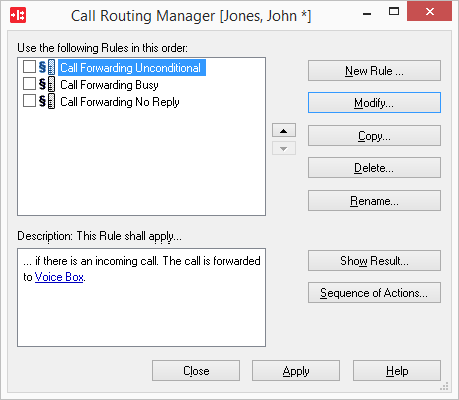
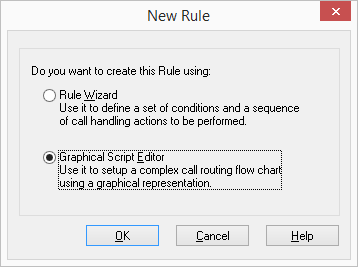
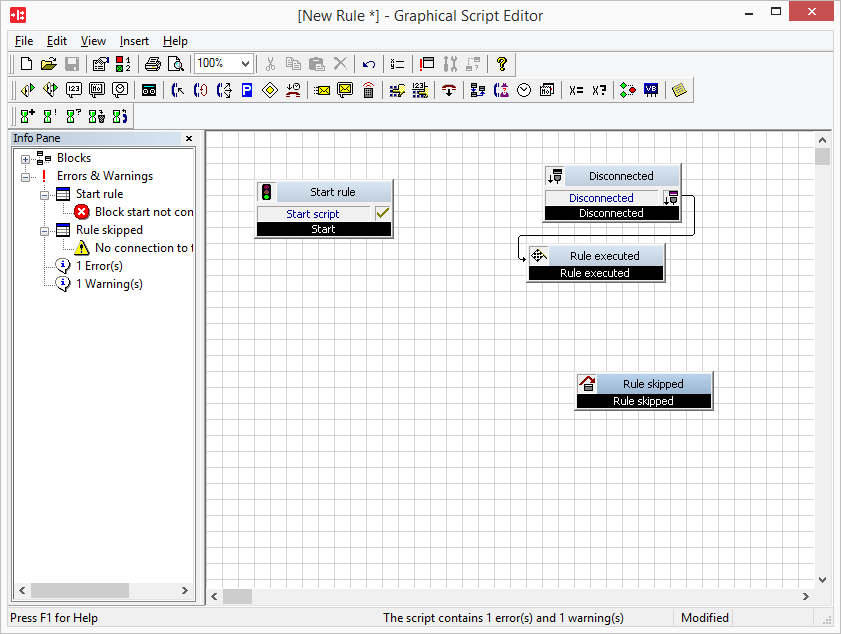
 in the menu bar and click once again on the grid interface of the the Graphical Script Editor to place the block “Play Announcement”.
in the menu bar and click once again on the grid interface of the the Graphical Script Editor to place the block “Play Announcement”.
 .
. , to listen to the selected file. Click on
, to listen to the selected file. Click on  to stop playing the file.
to stop playing the file.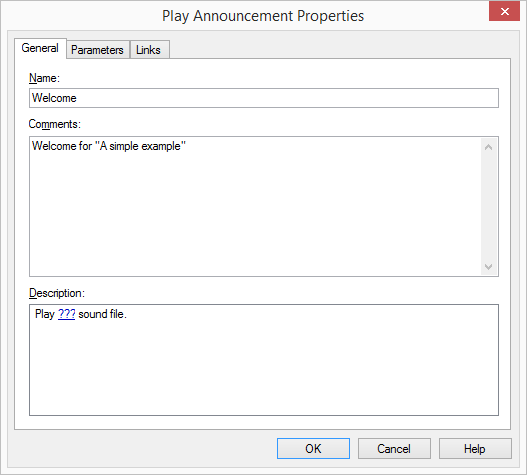
 by “Start rule”, keep the left mouse button pressed and drag the red line which appears to the entry of the “Welcome” block
by “Start rule”, keep the left mouse button pressed and drag the red line which appears to the entry of the “Welcome” block 
 symbol onto the grid interface.
symbol onto the grid interface.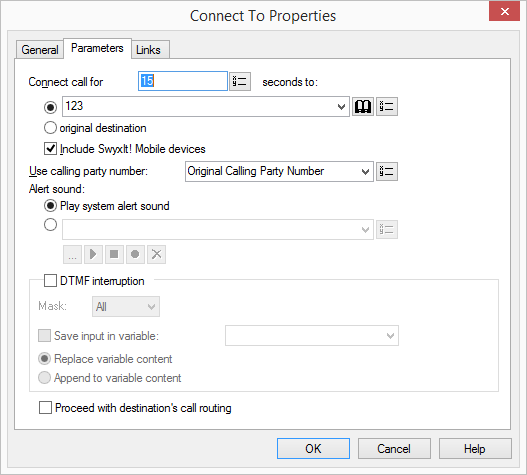
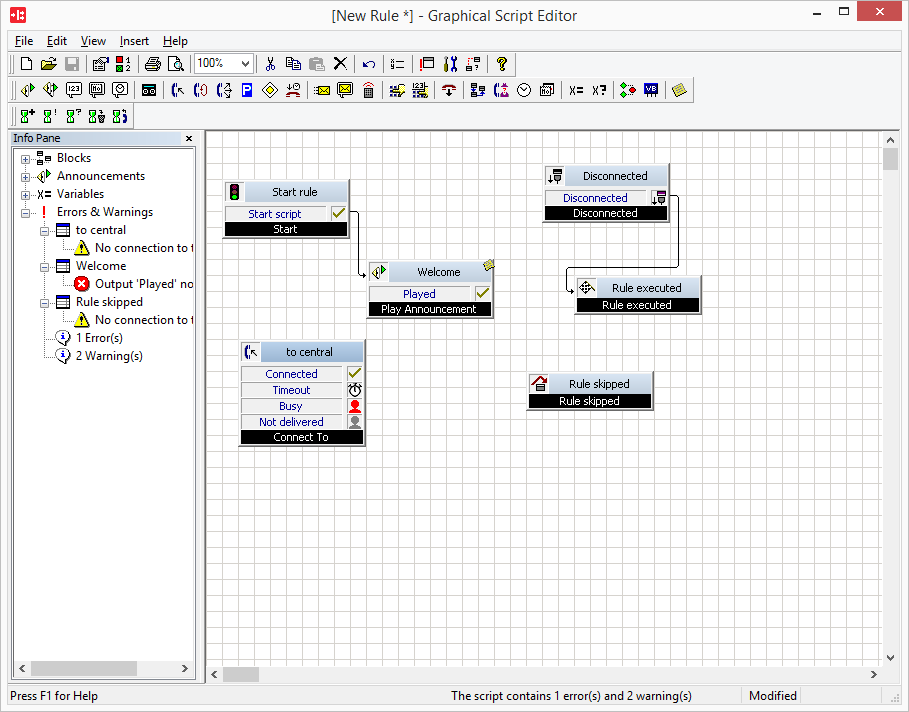
 block.
block. and “Busy”
and “Busy”  and "Not delivered
and "Not delivered  " to the entrance “Skip”
" to the entrance “Skip”  . This means, that it is possible for other rules to be applied by the Call Routing Manager.
. This means, that it is possible for other rules to be applied by the Call Routing Manager. .
.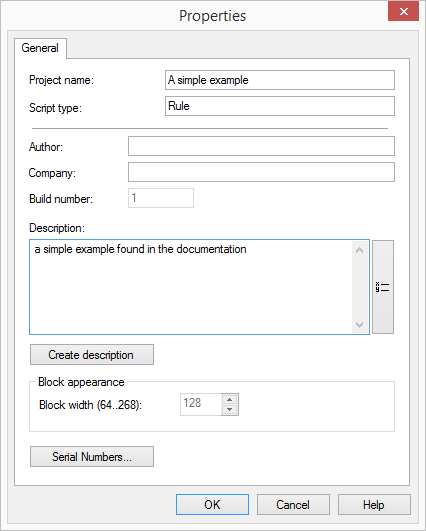
 . There is a check mark in the checkbox in front of the rule, which means that the rule is activated. It will then be analyzed by the Call Routing Manager for call handling.
. There is a check mark in the checkbox in front of the rule, which means that the rule is activated. It will then be analyzed by the Call Routing Manager for call handling.